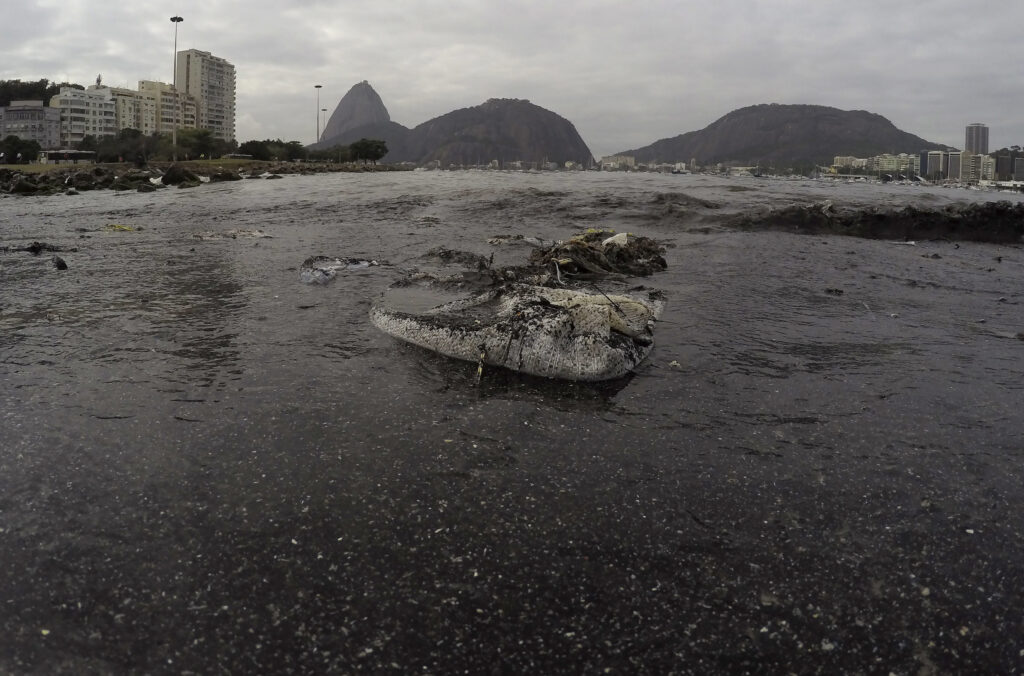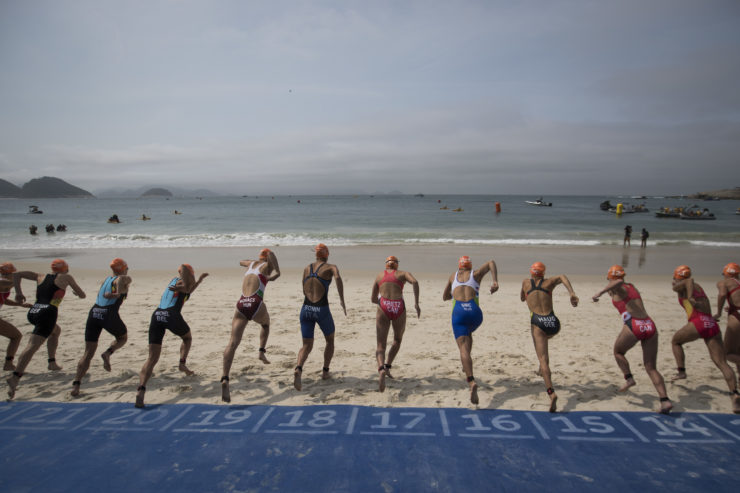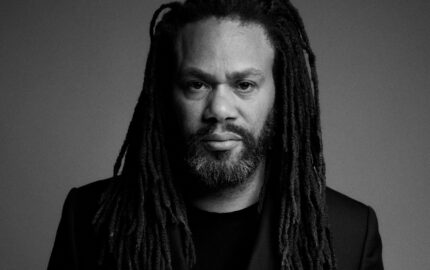The 2016 Rio de Janeiro Summer Olympics offered a host of memorable storylines: 28-time medal winner Michael Phelps’ final race, Ryan Lochte’s bizarre fabrication of a gunpoint robbery, and the “will they, won’t they” speculation as to which athletes might skip the Games to avoid Brazil’s Zika epidemic. And, of course, the bevvy of athletes who fell ill competing in the sewage-infested rivers and lakes that hosted the Games’ sailing, rowing and open water swimming events.
You’d be forgiven for forgetting the last storyline, because it didn’t happen—only one athlete who competed in the contaminated sites fell ill, and doctors did not conclusively link that illness to any cause. This outcome upended expectations for those who followed the doomsday scenario first reported in July 2015 by the Associated Press, which, relying on the results of its own independent water testing, predicted that Olympic athletes would swim and sail “in waters so contaminated with human feces that they risk becoming violently ill and unable to compete in the games.” The AP’s analysis soon found its way into major news outlets, including CNN and The Atlantic, which cited the findings alongside reports of athletes getting sick during practice runs on Rio’s courses.
ESPN senior writer Bonnie D. Ford offered a lonely counter to the dominant narrative. Her February 2016 piece, “The Promise Rio Couldn’t Keep,” held that, although Rio’s waters wouldn’t be cleaned to the standards outlined in the city’s Olympic bid, that had little do with athletes’ health. Olympians competing in open water events would likely be fine, she wrote, and Brazilian citizens, not athletes, would pay the price for the government’s failures to improve water treatment infrastructure.
Balancing scientific explanation with personal narratives, Ford told a nuanced story that, while offering no easy answers, painted a picture more reflective of the lived human experience than a purely data-driven one. It isn’t merely serendipitous that Ford’s expert weaving of history, science and first-hand accounts accurately predicted the impact of Brazil’s water pollution during the Games—it’s the outcome of a well-reported story.
Ford’s piece is effective not only because of its exceptional sourcing—by employing a sports lens to describe complex social, political, and ecological issues, Ford brings knowledge to bear for an audience that might otherwise never hear about it. As ESPN lays off its reporters in favor of broadcast rights and pundits, Ford’s brilliant piece reminds us that great sports journalism can play an integral role in—pardon the pun—leveling the playing field of civic discourse and engagement.
I spoke with Ford about the story, how it pained her a bit to contradict the AP project and her commitment to athletes’ rights. The interview has been edited for length and flow.

Where did the idea for the Rio water story originate from?
Let’s see…summer of 2015 the Associated Press blew out a big investigation where they did their own testing of bacterial and viral levels in the waters around Rio. We [ESPN’s international sport group and “Outside the Lines”; reporter Tom Farrey and producer Justine Gubar contributed to reporting] caucused about, “How can we advance this story?” and there was not really even a question, sort of like, “We’re going to do this, it’s just a matter of how and when.” We all agreed that it needed to be a piece that accomplished two things. It needed to look into the issue from the standpoint of social-cultural-political aspects in Rio, but we also needed to talk directly to athletes and how this was going to affect the Olympics. So, while we did not doubt the findings of the AP whatsoever, in terms of levels, what really needed to be explored in the story was, “OK, the water’s dirty, the sanitation’s terrible, this promise has been made to clean up based on the award of the Olympic bid, but is this going to truly affect the health of the athletes or the way the competition unfolds at the Olympics, and what’s going to be the legacy? Is this promise going to be kept, and how is that going to affect the folks down there, the folks that live there all the time?”
"I wanted to know: 'How is this going to affect people? How is this going to affect the Olympics? How is it going to affect the athletes?' Curiosity is the key, it really is. No assumptions, just curiosity."
I'm very proud of the piece because I think we did manage to hit that balance of, you're not writing a term paper, you're not writing "The History of Sanitation in Brazil." On the other hand, you have to know something about that. We had to interview officials, we had to get them on the record, and we had the human aspect as portrayed through Brazilian Olympic sailing family the Graels and the family in the favela. Hopefully the piece did its job in telling people that while things were far from ideal down there, and the promise of cleaning Rio's water was not going to be kept in a very significant way, that the chances of any particular athlete getting sick were probably not that great. That was a very different conclusion than what our colleagues at the AP had reached. They had some scientists on the record saying, “There's a 99% chance that you're going to get sick if you ingest just three teaspoons of water,” and I just didn't find that to be true. It pained me to feel as if, in a way, I was contradicting some pieces that had tremendous impact and started the global conversation, but that's the way it goes sometimes -- you have to start with an open mind. You can't start with a conclusion; you have to start with a question.
It does seem to anticipate what bore out in Rio: the water wasn't a focal point of the three weeks or so of coverage.
Let's not forget, though, the harsh spotlight that the AP and then many, many others, including us, shone on that problem I think held the authorities feet to the fire. They understood that if a TV set drifted onto the sailing course, it would have been terrible optics for the Olympics themselves and Brazil, as well. I do think that, to the extent they were able to tackle a problem that was decades in the making, I think they did what they could to make sure the competitive venues were as safe as they could be. Had that journalism not been done, who knows? Maybe things wouldn't have been as good. It's a larger point: Right now, as we speak, I gotta wonder, are the eco-barriers still in place? Are the eco-boats still patrolling? Is there any hope that any of these sanitation projects, which have been political footballs for years, are going to be completed? It doesn't look very good right now; I've been talking to people on the ground there because I'm getting ready to write a more general column about conditions there, and if anything, it seems things have deteriorated since the Olympics.
And that's too bad, because oftentimes, these sites have staying power, whether it's as resorts or as the next training venue for athletes.
These staggeringly beautiful beaches, which should be a great source of recreation and pleasure who live there, some of them are toxic. Not Copacabana, but others that are in the heart of the city. They didn't get any Olympic “bump.”
How do you think your piece fits into the larger landscape of reporting that came out before the Olympics, especially as a character-driven, longform piece?
I've been a sports writer now for 23 years, and I was a cityside reporter before that, and one of the things that's always fascinated me is how Olympic athletes view their work, their jobs, because they're in a quite different position from our professional team athletes. They are representing a country; they, in most cases, are not making a lot of money doing it; they are virtually unrecognized and unknown except for every four years; and also, in a lot of cases, they're doing sports that people don't understand very well, other than the obvious track, gymnastic, swimming. There are a lot more arcane sports in the Olympics, which is why we Olympic reporters tend to focus on people and not Xs and Os. The athletes’ rights, or working conditions, have always been of interest to me. Years ago there was an elite open-water swimmer from Philadelphia, my area, who drowned in a 10-kilometer race in the Middle East. He was an Olympic prospect. I did a long spool of investigative stories about that, determined there was negligence and, in fact, a lot of these races did not have adequate safety along the water.
"I would be shirking my responsibility as a journalist if I didn’t write about complicated social and cultural and financial issues in sport."
What I wanted to make clear in the piece is that the athletes don't have a lot of choice here. They don't have a lot of power. I think all of us can relate to workplace situations where we don't have a lot of power, where we're making tradeoffs between ambition and personal safety or comfort. Sarah True, the triathlete, what she said about how she felt about going, was one of the hearts of the piece. She might get sick, but she's going to go anyway; this is her dream. But she feels kind of guilty because she's going to jet in and out and there are things that will be left behind. I want my pieces to be as widely read and discussed as possible, and that means finding people and faces and not just “he said, she said,” scientific or political debate. There were a lot of good stories done about the water conditions, but I feel as if ours was the most comprehensive.
How did you use the few threads you had to put this in-depth story together?
It boils down to something very simple, and that's genuine curiosity. I read the AP stories and was horrified, but I wanted to know more. I wanted to know: “How is this going to affect people? How is this going to affect the Olympics? How is it going to affect the athletes?" Curiosity is the key, it really is. No assumptions, just curiosity. The other thing about investigative projects is, start to finish, this was about a six-month project. I was doing other things during that time, it wasn't just this, but I find, anyways, in order for something to really hold my attention for that long, for me to be passionate about something for that long, I better start with a really big dose of curiosity, because if you're just doing it out of obligation, it's not gonna be as compelling.
In terms of bringing the story together, what were the storytelling decisions you made along the way?
I broke it down, and the sections were pretty clear to me because they were scenes, essentially. The lead section and the second section were probably the most challenging because I wanted to start with a very strong theme and person, but then I had to flip pretty quickly into that nut graf of why you should read this. That required a lot of finessing and work and editing to get that down to something that was meaningful but adjustable. Lead scene, nut graf, a little bit of yin-yang there between here's what they said they would do, what hasn't been done, and here's somebody saying, "Well, I think it's going to be fine," and then transition into why it's not fine. And then, I don't know--the writing was challenging just because I was trying to tie together a lot of different things, but I was really helped by things I saw and the places where I had my feet on the ground. That moved the whole thing along.
I can't really think of any major interview or character that I explored that didn't wind up in the story, didn't wind up being not worth including. Again, it's simple—you want people to read the piece. You don't want them to feel like they're reading some treatise about water sanitation. I used the people as vehicles for the more technical or dry information.
Why do you like this kind of reporting?
I mentioned how long I've been a journalist—it'll be 36 years this June—and I have a horror of being bored. When you're a reporter and you're fitting news stories or features into the 800-, 1,000-, 3,000-, even 5,000-word boxes for that long, it can become formulaic, it can seem repetitive, particularly when it's every year or every four years you're covering the same event: the same teams, the same challenges ... there's a lot of sameness. My No. 1 job is always to keep myself interested, because if I'm not interested, then what's under my byline isn't going to be interesting. And then, as a senior writer, I feel as if it's my responsibility. I've got all this experience--on the city side, I covered cops and courts, politics, a lot of different areas, and then went into sports and did a ton of event coverage and a lot of athletes profiles, what you do when you first get into it. When I got to ESPN, I was encouraged to be more analytical, to write more news analysis and bring all that experience to the table. I feel a real responsibility to take on nuanced issues, because what good has this career been if I don't do that? Writing about athletes' rights and safety; about athletes' mental health; about anti-doping, doping and all of the challenges that causes for the sport's industry, the interaction of sports, society, culture, sexual abuse and assault, all of those things, unfortunately, are never going to go away in sports any more than they're going to go away in the general culture. I would be shirking my responsibility as a journalist if I didn't write about complicated social and cultural and financial issues in sport.



